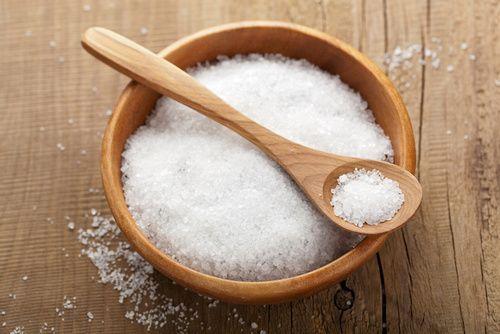Il sale iodato it is indispensable to the organism that wants to maintain the balanced amount of iodine and avoid deficiencies or imbalances. Let's find out better.
> Properties and benefits of iodized salt
> Curiosities about iodized salt

Description
Il sale iodato it is a municipality cooking salt, a spice obtained from sea water or from rock salt mines, then artificially added with iodine in the form of iodide or potassium iodate. Iodized salt represents the food solution proposed by the World Health Organization to try to deal with the ailments and health problems caused by iodine deficiency.
In fact, there are areas of the planet where the dietary intake of this mineral is low. The iodine requirement for the adult is about 150-180 micrograms per day. Pregnant and lactating women need to take about 50-100 micrograms more to ensure normal development of the baby. Each kilogram of iodized salt contains about 30 mg of iodine.
Properties and benefits of iodized salt
Iodized salt is an important product, especially for pregnant women and for those suffering from thyroid problems. The iodized salt in fact ensures a good mental and physical development of the child and regulates the functions of the thyroid, thus preserving important functions of the organism: the production of energy, growth, development, regulation of the basal metabolism and therefore the burning of excess fat, mental alertness, the health of skin, hair, teeth and nails.
The lack of iodine in the body can cause great physical or mental damage to the unborn child, such as cretinism or mental retardation, and, in adults, it can cause goiter, hypothyroidism or other disorders. In the country that of iodine deficiency does not seem to be such a serious problem, while there are other countries where one suffers from a lack of iodine in the diet.
Since salt is used by large sections of the population, with a homogeneous daily consumption, its iodization, a particularly economical operation, represents an ideal solution to prevent iodine deficiency in countries at risk. The concentration of iodine varies considerably in the soil, consequently the products that come from the earth, the water itself, can have a higher or lower concentration of this mineral.
Iodine is absorbed through the skin and in the gastrointestinal tract and is transported through the bloodstream to the thyroid, which retains about 30%. The remainder descends into the kidneys and is excreted in the urine. Sweat, tears, saliva and bile also help to expel it.
The iodized salt is useful for the well-being of the thyroid

Use in the kitchen
The iodized salt should be used like normal kitchen salt, in the same quantities, without increasing its consumption. In predisposed individuals, excessive consumption of salt, regardless of whether it is iodized or not, can favor the onset of hypertension (therefore some heart, kidney and blood vessel diseases), stomach cancer and osteoporosis.
For this reason, in individuals in good health, it is recommended not to exceed 5-6 grams of iodized salt per day (providing about 150-180 micrograms of iodine): little salt, therefore, but always iodized. The iodized salt is distributed in all the usual points of sale. Usually the points of sale that distribute it also have the information poster of the Ministry. The corresponding logo often appears on packaging and in other products that contain it as an ingredient.
Hydroprophylaxis is precisely the integration of iodine in the diet, so as to ensure the right daily amount. The most effective and economical way to prevent iodine deficiency diseases is to use iodized salt instead of common table salt. The iodized salt is white and does not alter the taste of food. It is kept away from light and humidity, just like common kitchen salt.
Animals and marine vegetation, such as fish, crustaceans, molluscs and algae, in particular the kelp alga, absorb iodine from sea water and they are among the best sources of this mineral. Other foods that contain iodine are: garlic, soy beans, spinach, chard, courgettes, turnip greens. In smaller quantities it is also found in eggs, cheese and milk, cereals and meat.
Curiosities about iodized salt
Salt enriched with iodine is marketed in food shops and tobacconists under the name of "iodized salt" or "iodized salt". It should therefore not be confused with the sea salt or the whole salt, however, richer in iodine than traditional sodium chloride. In Japan, where the consumption of algae is quite common, the problem is very slight, indeed it is often necessary to take measures to prevent any excesses. Although the body is perfectly capable of eliminating excess iodine in the urine, particularly high dosages (for example with the use of supplements based on seaweed) can still be harmful.
Discover the effects of iodine on the mind, body and psyche
Other articles on salt:
> Salt and conscious eating
> The varieties of salt
> Types of salt, let's find out
| Saltsistersonline.com


























